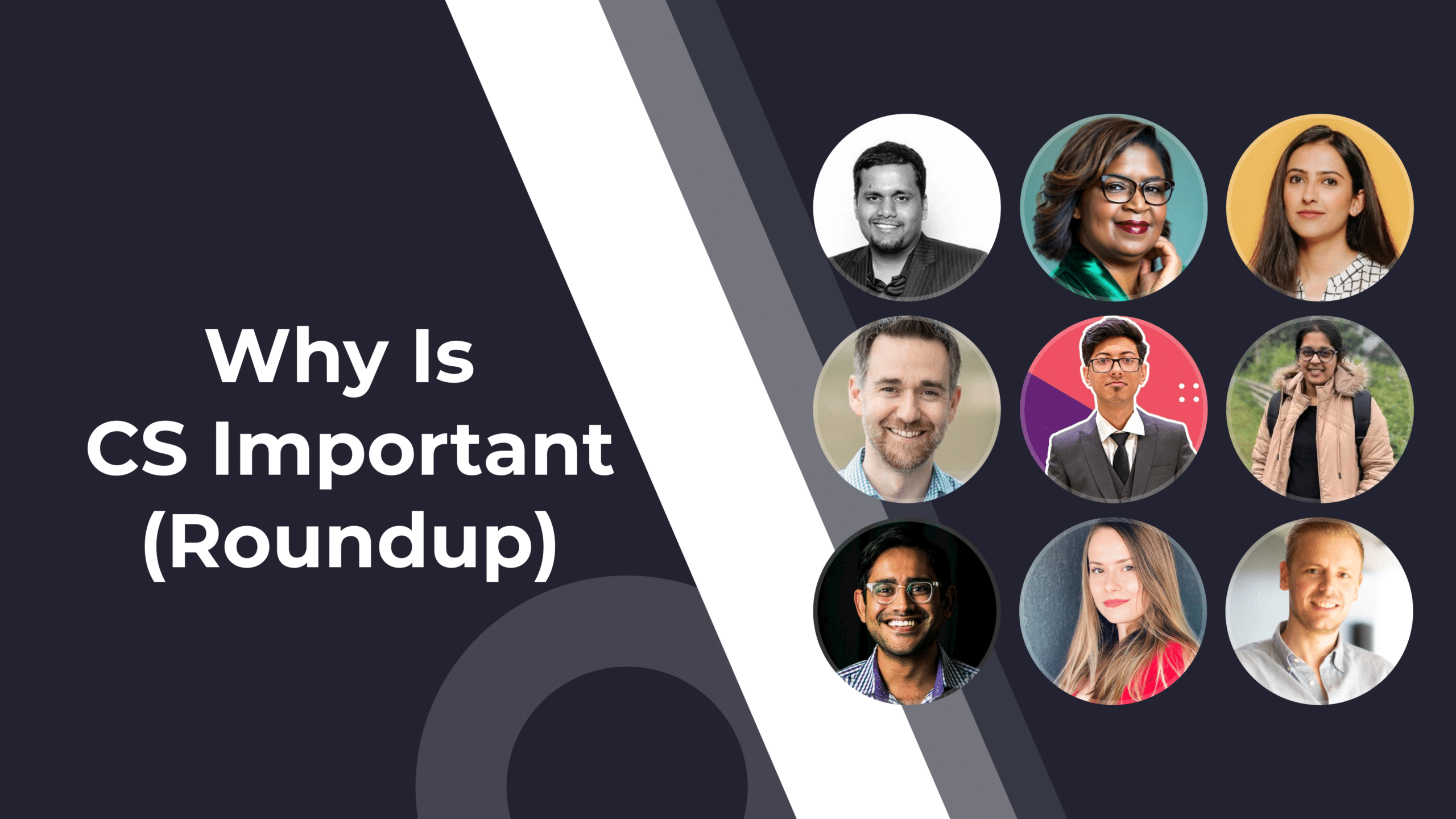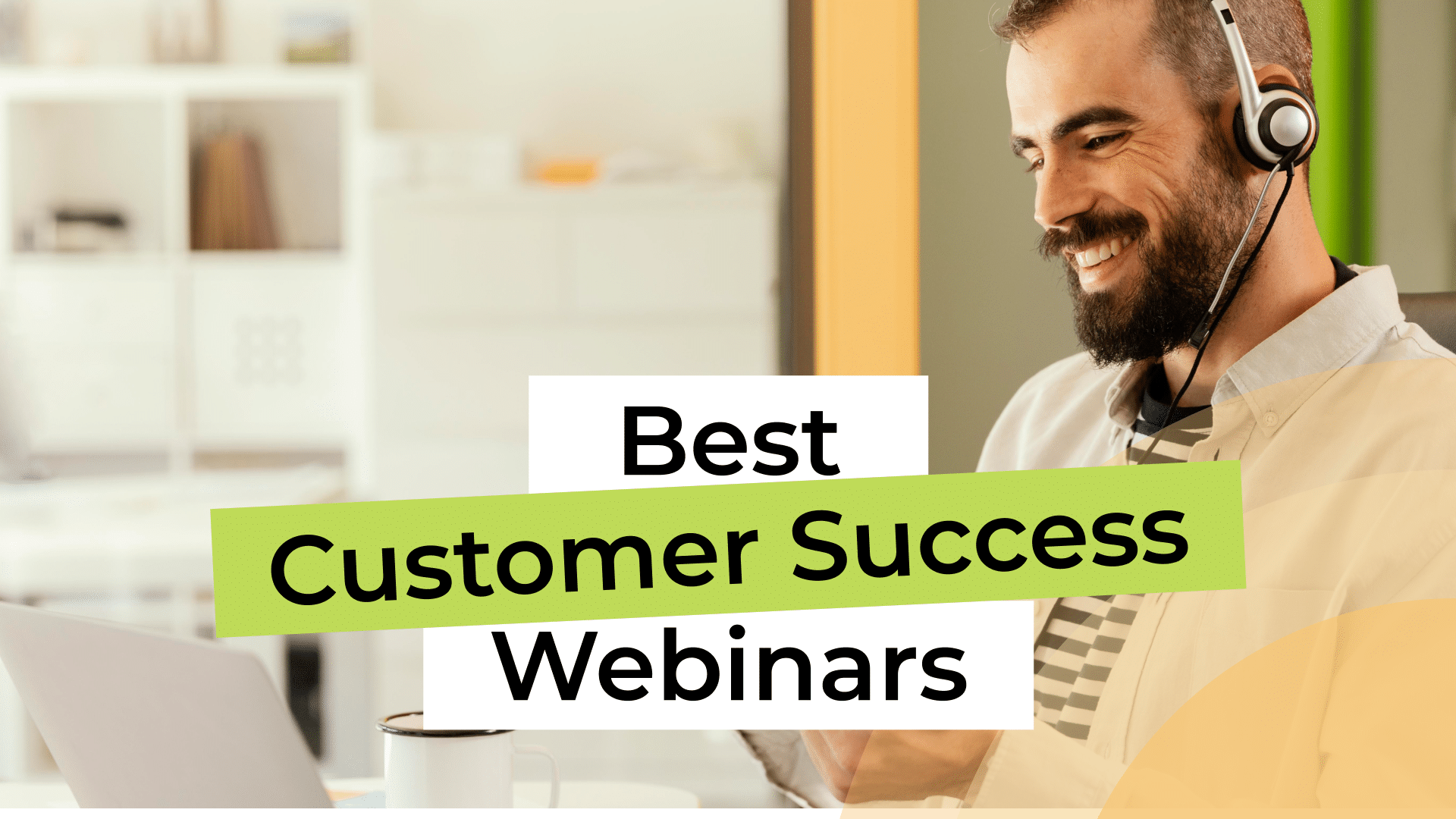Customer success is one of the most rewarding careers on the rise at this point. More and more people discover they have a knack for customer relations and helping people reach their goals. So it’s no surprise that many decide to become leaders of customer success.
We live in this space. We know it’s easy to get inspired by the range of wonderful and insightful CSMs out there. So in this article, I thought I’d show you a range of top-level opinions about how to become a CS leader from a selection of industry voices.
But first, we should align on what it actually means to be a CS leader.
What Is a Customer Success Leader?
It’s a valid question. A customer success leader could mean the head of customer success within their respective organization. It could be a global influencer in the CS space with no actual role managing CS at this point in time. It could be somewhere in between – and most people I know in CS would agree. But let’s get more specific:
A customer success leader is a great communicator with significant online presence and reputation and extensive, in-depth experience managing customer success. They can be the current director of Customer Success in their organization, or they may be holding a consultancy position offering training, leadership insights, and mentorship within the CS community.
To be a great CS leader, you need to think on three levels:
- Communication. A customer success leader is first and foremost a great communicator. Whether they talk to their team or to the broader CS space in places like LinkedIn, they must know a thing or two about marketing, about writing compelling copy, and distributing their takes for a broad audience.
- Strategy. Then, a CS leader must of course think about customer success strategies – what it takes to drive their customers to their goals. The experience gained through these strategies must then be translated into actionable points for their CS team and for their online audience.
- Collaboration. Top CS professionals must also be conscious of how their role fits within the grander picture of an organization – how CS must align and collaborate with Sales, Product, Support, Marketing, and how they should lend their input on a business level.
Career Path and Potential Roles
As far as potential CS career paths, most customer success leaders start out as customer success associates in customer service. After gaining some experience and business training, they typically advance to one of the following positions:
- VP of Customer Success
- Chief Customer Officer (CCO)
- Customer Success Trainer (aka Coach, Consultant, Training Specialist)
- Director of Customer Success*
- Principal Customer Success Manager*
- Head of Customer Success*
- Customer Success Executive*
*Last four titles on the list are often used interchangeably. Read more: Customer Success Career Path Hub
What Does a Customer Success Leader Do? Skills and Responsibilities
In terms of skills and responsibilities, CS leaders’ workflows typically align with other top CS positions. However, unlike those roles, they require higher leadership, communication, and training skills.
Key Skills & Responsibilities:
- The ability to lead a customer success team, from creating the department to growing the team, promoting a scalable approach providing training, and ensuring all processes, roles, and strategies are optimized and customer-first.
- Championing customer goals and developing customer relationships by either actively participating in client discussions or by coaching the team following data-led, sustainable CS tactics.
- Creating and optimizing a data-driven model of the customer journey, and promoting alignment on that journey throughout the organization.
- Working with the team to develop metrics, health scores, and KPIs relevant to each account, the entire team, and the entire business.
- Improving CS KPIs – product adoption, customer loyalty and retention, customer satisfaction, customer churn rate, and upsells and cross-sells.
- Contributing to business development by overseeing CS initiatives, growing client partnerships, and working together with the C-suite to promote a lean business model.
- Providing training and coaching the customer success team and to other CSMs within the CS space (CS trainer)
- Communicating the value of customer success, staying up to date with trends, attending CS events, webinars, and podcasts (online and in-person), and maintaining an active presence in the most influential CS spaces (LinkedIn, Slack communities, and others).
How Do You Become a Customer Success Leader? Global Experts Answer
1. Remain curious and interested in your customers as people – Ellie Yates

Yes, there are going to be tasks you have to do throughout the day—there will be repetitive things, and admin might not be your strong point. But as long as you remain curious when you’re having conversations and discussing things with your customer, and you’re genuinely interested in them as a person, as an organization, and in understanding the challenges they face and what their company actually does, it will keep your days interesting and make people want to talk to you.
That’s really important. To be a good customer success manager or a good relationship manager, it’s about people being excited to hear from you or having confidence in you when they have an issue to raise. It’s about them feeling they can talk frankly and openly with you about a problem or challenge because of the strong working relationship you’ve built. Curiosity helps with all of that.
Ellie Yates, Head of Customer Success at Signable, in Episode 20 of Mastering CS
2. Always think on a business level and never wait for customers to churn – Jordan Wyner

And a success plan is made up of just a couple parts. It’s usually one or two slides. What are your business priorities? If I were a fly on the wall in your boardroom, what are your business priorities? It has nothing to do with our product. Okay, great. Now we can orient your product priorities to supporting your business priorities. Because this could be something that’s a really squeaky wheel. It’s really driving you crazy. But you told us that was important. Okay, great. Now we can have a really informed conversation on it.
It also gives you that north star, that source of truth when things aren’t going well to say, hey, you told us this was really important – that’s where we’ve been focused. I know this is driving you crazy over here, but are we on the same page? Do we need to change our alignment?
And having that business level conversation means that you stop talking about bugs and you keep talking about the business and about the way that you are partnering and adding value. So success plans and don’t get comfortable just because you don’t have churn.
Jordan Wyner, Vice President of Customer Success at Softrip, in Episode 26 of Mastering CS
3. Find balance and don’t scale too quickly – Amy Newbury

Quite a lot of the time, you can add a bunch of tools to CS, or you can add a bunch of people to CS, and you end up with quite an ineffective mix. I think if you can train up your team to be really effective at what they’re doing, you don’t need as many of them from a financial perspective and to keep your C-suite happy. But also, what they’re doing is more valuable, and each of the conversations they’re having is better. It’s more fun for them. They feel empowered. They’re not nervous going into calls. Equally, they can handle renewals on their own. They can handle tough, mitigating situations on their own as well.
Amy Newbury, Head of Customer Success at Kleene, in Episode 21 of Mastering CS
4. Build connections within the CS space and focus on business – Chethan Kumar

When you try to build connections, when you try to meet people, it shouldn’t just be fun; it should be pure business, but pure business focused on real problem statements, right? That’s one thing. Secondly, a lot of startups are looking for people who can consult them and help move that needle a little ahead from where they are today. They may not be able to afford people who demand high salaries. It’s okay to consult and try and explore those small opportunities, and try and help those small organizations while learning something and making a few bucks.
Chethan Kumar, Head of Customer Success at Augnito, in Episode 17 of Mastering CS
5. Don’t skip evaluation when joining a new CS team – Keishla Ceaser Jones

Keishla Ceaser-Jones, Sr. Director and Partner Success at EAB, in Episode 15 of Mastering CS
6. Be ready for difficult times and tough renewal conversations – Parker-Chase Corwin

Parker-Chase Corwin, CEO and Principal Consultant at Xperience Alchemy, in Episode 11 of Mastering CS
7. Slow down to speed up and give yourself more credit – Sadie Shepard

Just remember that everything has its highs and lows, and I think this year, especially, has been really tough for customer success managers with just burnout in general. There’s tons of evidence out there that would support me in saying that. But at the end of the day, customer success managers are more often than not in the role because they’re in the business of helping people, and they don’t give themselves enough credit.
So I would just say, slow down to speed up, enjoy the end of the year, and be optimistic about what’s to come because it’s easy to get into a negative headspace and spiral, but that doesn’t do anything for anyone.
Sadie Shepard, Advisor and Owner at SADESHEP, in Episode 9 of Mastering CS
8. Prove your worth with as few resources as possible – Alexandre Kinapenne

It’s always about solution-focused thinking rather than saying, “I need 10,000 euros to buy new software because I’m sure it will help with retention and expansion.” I’d actually approach it the other way—play around with the tech you already have. We’re lucky to have many solutions, sometimes cheap ones or no-code options that you can build yourself. Try it out, and if it works, it will be much easier to get buy-in from your management team.
Alexandre Kinapenne, Head of Customer Success at Nodalview, in Episode 22 of Mastering CS
9. Remember existing customers are the ones paying your salary – Victoria Fritz

The NRR (Net Revenue Retention) is presented to investors in every C-level meeting. It’s very down-to-earth for us. My advice would be to pick one KPI and report it to the very top. It’s very helpful for the team because then they have an impact on really strategic stuff, not just on some fancy numbers that maybe no investor would care about.
Victoria Fritz, Head of Customer Success at SocialHub, in Episode 19 of Mastering CS
How to Lead in Customer Success: Playbook for Managing CS
Since we’ve talked to so many leaders in the space, we thought we’d take a step back and ask – what does it actually mean to lead in CS? Is it enough to have a productive team, or do you need to move beyond that?

Irina Vatafu, Head of CS at Custify
Throughout my career, I’ve found the following to be quintessential to a futureproof playbook for managing customer success:
1. Communicate goals and scope of the effort, make sure the team understands
One of the most commonly overlooked parts of CS is goal-setting and alignment. Most CSMs know some KPIs and what they need to do in their day to day. Maybe they even have a good set of customer success tools at their disposal. But without a clear strategy complete with set playbooks for every tactic, they’re rudderless against a sea of uncertainty.
A good CS leader must own their role and not fly by the seat of their pants. They have to know the core concepts of customer success, communicate those effectively to the team, and ensure they’re understood. Then it’s only a matter of deciding what to do for each account.
This type of communication can also be used to improve your communication skills outside of the organization – to your social media followers and the CS space at large. Remember a good amount of CS leaders likely first started talking about strategy internally rather than on LinkedIn.
2. Focus on the CS culture intrinsic and extrinsic to your organization
I know personally that many CSMs joined this line of work out of a deep appreciation for CS culture – the idea of helping people through your role, the concept of delivering success through your actions, the team and discipline that together make what we know as customer success today.
In your communications, both intrinsic or extrinsic to your organization, try to capture that feeling – as I believe it’s what makes customer success one of the best new business functions and one we can rely on for many years to come.

Parker-Chase Corwin, CEO and Principal Consultant at Xperience Alchemy, also as part of Episode 11 of Mastering CS
3. Make your workflows, processes, and playbooks workable, scalable, and results-driven
A CS leader must also be a highly-efficient manager – they need to know, champion, and ensure implementation of the best industry-wide practices in CS. That means:
- Creating individual team workflows
- Drafting processes for each Customer Journey stage and for every CS tactic you will use (like proactive outreach and onboarding)
- Selecting and implementing the tools the team uses in their day-to-day
- Assigning accounts per CSM and helping the team be successful
- Learning from customer interactions and writing down things to improve / lessons learned
- Setting up automation flows and predictive health scoring with centralized data points in your chosen CSP
- Transforming your learnings into action items for the team and good practices to pass on to your audience
Learn how Fuse Universal put this into practice and reduced their customer churn by 45%.
To be able to create a well-oiled CS effort like Fuse did, you will require a customer success software stack that can support you in your efforts – from your CSP to your customer service platform, chat app, AI solutions, email client, and more.
4. Work data-led and promote a culture based on fact-finding and smart decision-making
In CS, it’s much better to work with a few tools delivering highly-specific and relevant data points, than to have too many tools, disparate and poorly implemented, that nobody on the team can make heads or tails of.
With good data, a customer success leader can:
- Work to perfect the team’s workflow and processes
- Make informed decisions with regards to customers’ accounts
- Add value repeatedly and easily to any customer meeting by providing data customers can act upon
- Creating smart automations that anticipate customer needs and lower support load
- Personalizing customer experience to unprecedented levels
5. Make value realization and maximization your chief goals for all your customers
Focusing on existing customers is nothing new – it’s the foundation of customer success. So it’s only natural that customer success leaders champion customer value realization – basically learning customer’s goals and ensuring the proper solutions are delivered in a scalable approach.
But another item that’s often ignored is value maximization – which means attempting to maximize the revenue brought in by customers through add-ons, upsells, and cross-sells that make sense for them (and ideally help them achieve their desired outcomes).
To effectively plan for these two goals, CSMs need to be customer-centric in their entire approach. As for how to be more customer-centric, let’s listen to Renata Pinheiro, VP of Customer Success at Zaptic, talk about her experience ensuring customers get value at every stage:
Summing Up
Becoming a CS leader is hard work – learning the ropes, leading a CS team, gaining the necessary experience to be able to pass on your knowledge – all these steps take time.
Thankfully, in Custify you’ve got an ally. We’ve made it our mission to highlight the most insightful and impactful CS leaders in the space through our podcast and webinar series, and we continue to provide free resources – such as this article – and a top-of-the-line customer success platform to help you drive your growth in CS. For any assistance in setting up your CS team, don’t hesitate to reach out and opt for our concierge onboarding.





